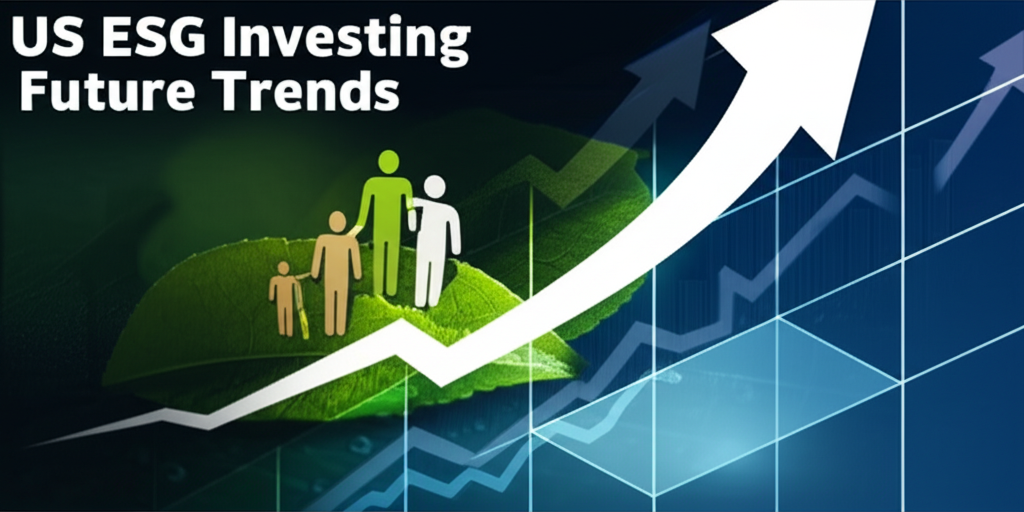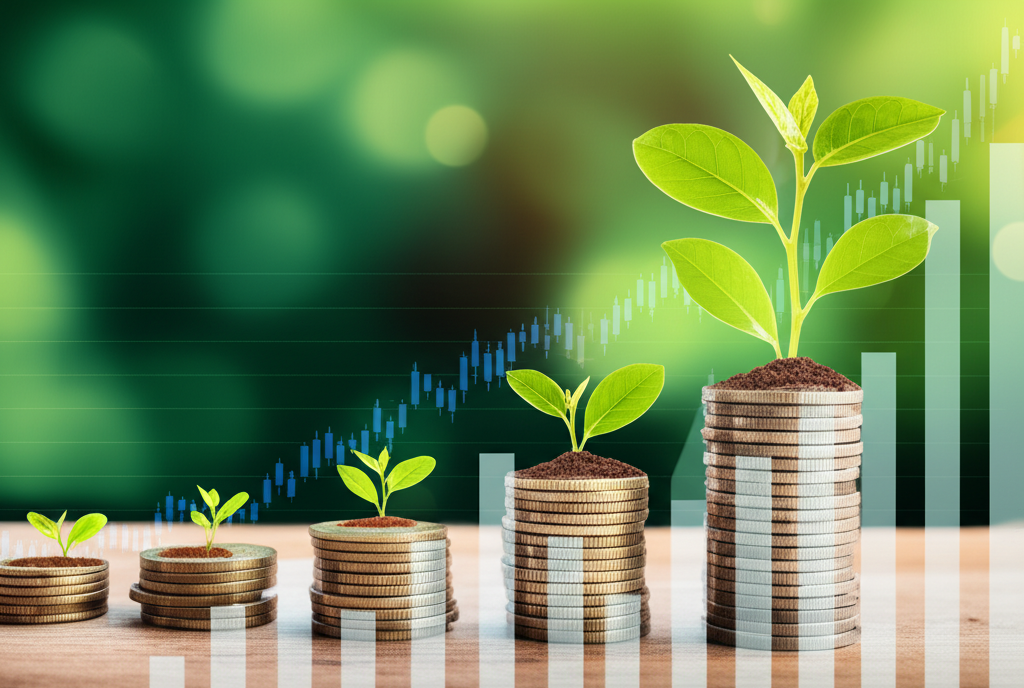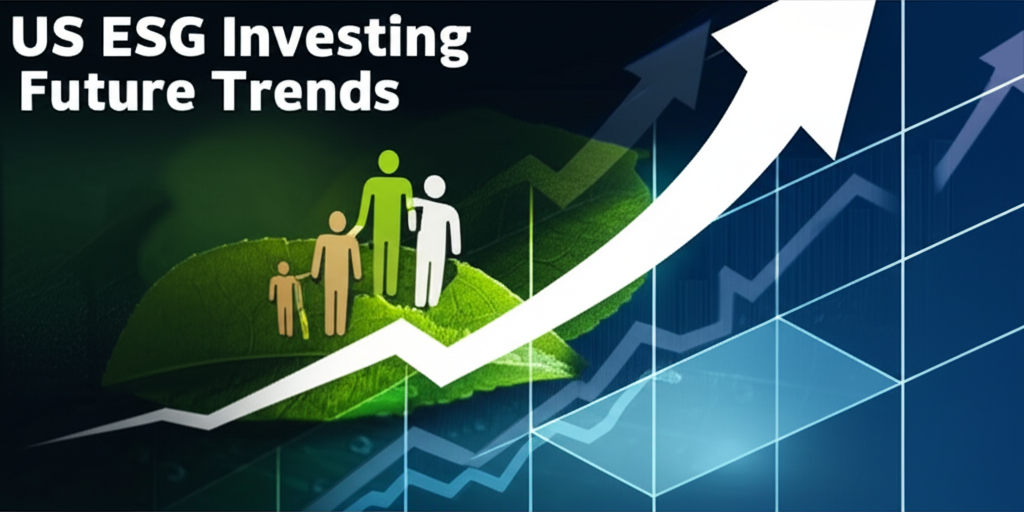Introduction: The Evolving Landscape of ESG Investing in the United States for 2025
The world of investing keeps shifting as new priorities emerge, and Environmental, Social, and Governance (ESG) strategies have captured widespread attention like few others. For investors in the United States, 2025 stands out as a turning point, where sustainable finance sees deeper understanding, broader integration, and stricter regulation. Once viewed as a specialized choice for those driven by personal ethics, ESG has now become a standard part of how both everyday and large-scale portfolios decide where to put their money. In this overview, we’ll dive into the leading ESG trends, what fuels them, and how they play out in real terms, giving you practical steps to handle this fast-changing field.

As climate risks intensify and social expectations rise, US investors are rethinking traditional approaches to build more durable portfolios. This shift isn’t just about feel-good choices; it’s backed by evidence showing that ESG-focused companies often handle disruptions better and deliver steadier growth over time. With assets under sustainable management hitting $8.4 trillion by early 2022, according to the US SIF Foundation’s Biennial Report on US Sustainable and Impact Investing Trends, the momentum is clear and building.

What is ESG Investing and Why Does it Matter to US Investors?
ESG investing builds on conventional financial evaluations by weaving in environmental, social, and governance elements to guide decisions. This approach helps spot opportunities and risks that pure numbers might miss.
- Environmental (E) elements look at a company’s footprint on the planet, covering efforts to combat climate change, manage scarce resources, cut pollution, and protect biodiversity.
- Social (S) aspects review how a business handles ties with workers, vendors, clients, and local areas. Topics here range from fair labor standards and diversity, equity, and inclusion (DEI) to human rights protections and safeguarding customer data.
- Governance (G) deals with leadership structures, executive compensation, auditing processes, internal safeguards, and shareholder protections. Solid governance promotes openness and keeps leaders accountable.
Why should US investors care? It goes further than matching money to morals. Research repeatedly links top ESG performers to lower risks and stronger, more reliable returns in the long run. The surge in sustainable assets underscores a shared view that these issues reveal a company’s true strength and staying power. That $8.4 trillion figure from the US SIF report at the start of 2022 highlights how ESG has woven into the fabric of American finance.
Key Environmental (E) Trends Driving Sustainable Investing in 2025
Environmental issues lead the ESG charge, with investors zeroing in on real-world steps and clear reporting rather than vague promises.
- Climate Change Mitigation and Adaptation: Funding for renewables like solar, wind, and geothermal, plus energy-saving tech and carbon-capture methods, will pick up speed. As weather extremes hit harder, money will also pour into adaptive measures, such as tough infrastructure and smarter water systems, to build resilience.
- Circular Economy Principles: Investors will shift support to firms ditching the old take-make-waste cycle for ones that minimize trash, repurpose materials, and recycle effectively. Think breakthroughs in eco-friendly packaging or supply chains that loop back resources.
- Biodiversity and Natural Capital Preservation: Protecting ecosystems moves beyond just emissions. Scrutiny will grow on how businesses affect wild areas and their work in restoring habitats, making conservation a bigger deal in investment choices.
- Sustainable Agriculture and Water Management: As world populations climb, feeding people without draining resources becomes urgent. Capital will target innovators in vertical farms, clean water tech, and precise farming techniques that boost yields while saving water.
- Increased Focus on Climate-Related Financial Disclosures: Regulators like the Securities and Exchange Commission (SEC) in the US are advancing rules for uniform, required reporting on climate impacts. This will arm investors with reliable, side-by-side data to weigh dangers and prospects more accurately. For context, these disclosures could reveal hidden liabilities, like supply chain vulnerabilities to droughts, helping portfolios stay ahead of curveballs.
Social (S) Trends Shaping Responsible Investment in the US Market
Social elements are stepping into the spotlight, mirroring wider calls for fairness and human-centered business practices.
- Diversity, Equity, and Inclusion (DEI) Initiatives: Talk is cheap; investors now seek hard data on DEI advances in executive teams, employee makeup, and vendor networks. Firms excelling here tend to spark fresh ideas and weather storms better, as diverse perspectives drive innovation.
- Human Capital Management: Prioritizing worker health, equitable pay, safe conditions, and benefits packages marks a truly responsible outfit. The wave of resignations in recent years spotlighted how a positive workplace reputation attracts and retains top talent.
- Community Engagement and Social Impact: Businesses face closer looks at their community roles. Funding will go to those making real differences via donations, local hiring, and sourcing that respects ethics.
- Supply Chain Ethics and Transparency: Full visibility from mine to market is the new standard, ensuring no exploitation in labor or environment. This trend pushes companies to audit partners rigorously, reducing reputational risks.
- Consumer Privacy and Data Security: With hacks on the rise, protecting personal info is non-negotiable. Strong defenses and clear policies on data use build trust and shield against massive fines or backlash.
Governance (G) Trends for Robust Corporate Accountability in 2025
Effective governance underpins ESG success, fostering trust and steering companies toward enduring value.
- Board Diversity and Independence: Pushback for boards mirroring society’s variety-in backgrounds, expertise, and makeup-continues, as varied groups make sharper calls and stronger checks. True independence from management keeps things honest.
- Executive Compensation Alignment with ESG Goals: Linking bonuses to concrete ESG wins motivates leaders to prioritize sustainability, turning green talk into green actions.
- Cybersecurity Governance: As digital dependence grows and threats multiply, boards must oversee cyber defenses directly, treating them as core risks on par with finances.
- Shareholder Activism on ESG Issues: Proposals on emissions, fair pay, and political donations are surging and winning more votes, letting owners nudge companies from the inside.
- Ethical Leadership and Anti-Corruption Measures: Cultivating integrity through anti-bribery rules and honest books is table stakes for credibility.
- Transparency in ESG Reporting: Standardization efforts will demand detailed, verified numbers over fluffy narratives, giving investors tools to compare apples to apples. This could include third-party audits to verify claims, adding layers of confidence.
Emerging and Differentiated ESG Investing Trends for United States Investors in 2025
Stepping outside the basics, fresh ideas are redefining ESG for American portfolios, blending innovation with practicality.
- The Rise of Impact Investing Beyond Public Markets: ESG typically eyes stocks, but impact investing chases verifiable good in areas like private equity or startups. This hands-on style tackles big issues head-on, from clean tech ventures to community loans.
- “Greenium” and Valuation of Sustainable Assets: A “greenium” premium rewards top sustainability with higher prices or lower yields, seen in green bonds or eco-buildings. It reflects their edge in dodging risks and thriving long-term, as seen in sectors like renewables outpacing fossils.
- Regulatory Convergence and New Standards: US rules are catching up fast, with SEC climate mandates joining global efforts like the International Sustainability Standards Board (ISSB). This alignment cuts confusion, letting investors compare global players fairly.
- Technological Advancements (AI, Blockchain) in ESG Data Analysis: AI sifts through vast data for sharp, ongoing insights, while blockchain tracks chains of custody to bust false eco-claims. Together, they clean up reporting and spot true leaders.
- Behavioral Finance and Investor Psychology in ESG Adoption: What draws people to ESG-ethics, fear of fallout, or status-shapes how advisors craft plans. Recognizing these nudges allows personalized strategies that stick.
Challenges and Opportunities in US ESG Investing for 2025
ESG’s boom isn’t without hurdles, but it also unlocks doors for savvy US investors.
- Addressing Greenwashing and Authenticity Concerns: Flooded with “sustainable” labels, it’s easy to doubt claims. Thorough checks and outside validations are essential to separate real from hype.
- Data Quality and Standardization Issues: Patchy reporting and self-serving stats complicate judgments. Incoming rules promise fixes, but until then, cross-checking sources is key.
- Balancing Financial Returns with Impact: Hitting profits while doing good remains tricky, though evidence suggests they often align. Investors should track both metrics to avoid compromises.
- Navigating Political and Ideological Headwinds: Backlash in some states views ESG as agenda-driven over duty-bound. Staying informed on policy shifts helps sidestep pitfalls.
- Opportunities in New Sustainable Technologies and Market Segments: Hurdles breed chances, like in green tech or impact-driven businesses. Early movers in these areas could see outsized gains as adoption spreads.
Integrating ESG Principles into Your Broader Investment Strategy: Considerations for US Investors
ESG for US investors means more than picking eco-funds-it’s a lens for overall planning. It shapes choices in stocks, bonds, property, and beyond, probing the ethics of every holding. Yet diversification stays king; blend ESG with classic strategies by picking solid performers across industries and regions. This way, you guard against sector slumps while chasing sustainability.
Choosing a Broker for Your Diversified Portfolio: A Look at Top Options for US Investors in 2025
Picking the right broker sets the stage for a balanced portfolio that fits ESG aims. Look for user-friendly interfaces, diverse options, fair fees, solid support, and top-notch compliance. Below, we compare standout choices that enable flexible, informed investing:
| Broker | Key Advantages for US Investors | Relevance to Diversified/ESG-Complimentary Strategies |
|---|---|---|
| 1. Moneta Markets | Delivers tight spreads and minimal costs on global assets like forex, indices, commodities, and share CFDs, offering broad diversification options. With platforms such as MT4/MT5 and WebTrader, plus reliable support, it suits complex strategies. Holding an FCA license, it ensures strong regulatory protection for US users managing varied holdings. | This setup optimizes capital use and global reach, supporting ESG goals by letting investors pinpoint sustainable plays across markets while keeping costs low. |
| 2. OANDA | Stands out for clear pricing, cutting-edge tools, and deep research, empowering smart choices. Its established track record and US oversight by CFTC and NFA create a trustworthy base for multifaceted investing. | OANDA’s clarity and insights help spot ESG-aligned sectors or firms, building secure, varied portfolios with data-driven picks. |
| 3. IG | Opens doors to countless markets and tools, backed by learning resources and a robust platform. Global reach with CFTC and NFA compliance makes it a safe bet for expansive US trading. | IG’s wide access and education let investors weave in ESG across assets, fostering informed, balanced approaches. |
The Future Outlook for ESG Investing in the United States Beyond 2025
Post-2025, ESG in the US looks set for steady expansion and tighter ties to everyday finance. Big players like pensions and endowments will lock in ESG as core, channeling funds to green assets and prodding firms to step up. What starts in specialty funds will seep into indexes, ETFs, and lending standards. Everyday investors, awakened to crises like warming and inequality, will keep demand high, spurring banks to roll out more options. Ultimately, ESG will shift from niche to necessity in smart, future-proof planning.
Conclusion: Embracing Sustainable Growth in the US Investment Landscape
ESG has cemented itself as a cornerstone of US finance, far from the sidelines. Ahead into 2025 and later, grasping shifts in clean tech, equity drives, governance strength, and anti-hype measures equips investors well. Adopting ESG lets Americans match portfolios to principles, possibly boost enduring gains, and aid a fairer world. Smart involvement, fueled by solid info and adaptable brokers like Moneta Markets, will guide through this reshaping era.
Frequently Asked Questions (FAQ) about ESG Investing Trends in the US
What are the top ESG investing trends for 2025 in the United States?
Leading trends for US ESG in 2025 cover ramped-up climate reporting, circular economy shifts, deeper DEI pushes, calls for supply chain openness, and beefed-up cyber governance. Emerging ones include impact plays outside stocks and AI-powered data digs.
Why is ESG investing gaining popularity among US investors?
Its rise stems from heightened awareness of planetary and societal woes, proof that ESG cuts risks and lifts long-haul returns, plus a drive to sync money with morals. Rules demanding openness are speeding its entry into the mainstream.
What does the US SIF Trends Report indicate about sustainable investing?
The US SIF Foundation’s Biennial Report on US Sustainable and Impact Investing Trends tracks the field’s expansion, showing big jumps in assets handled by institutions, managers, and development lenders. It spotlights ESG’s spread across finance.
Can you provide examples of ESG activities for companies in the US?
US firms engage in ESG through:
- Environmental: Pouring into renewables, slashing emissions, streamlining water use, adopting green packaging.
- Social: Providing full benefits, championing diverse hires and leaders, enforcing fair supply chain labor, bolstering communities.
- Governance: Running independent, varied boards, tying pay to ESG hits, fortifying cyber measures, enforcing anti-corruption stands.
How can an individual investor in the United States get started with ESG investing?
US individuals can kick off by scouting ESG mutuals or ETFs, backing high-rated firms, or tapping brokers with ESG filters. Pin down your values and aims first for true fits. Brokers like Moneta Markets add diversification muscle, handling varied assets cost-effectively to bolster ESG plans.
What is “impact investing” and how does it relate to ESG trends?
Impact investing seeks concrete social or eco wins plus profits, a focused slice of sustainability. Unlike ESG’s avoidance of bad actors, it hunts positive drivers, like funding solar startups or housing for the needy- a bolder path to tangible change.
Are there specific ESG investing trends discussed on platforms like Reddit?
Platforms like Reddit buzz with ESG talk, from hot green picks to fund efficacy debates, greenwashing worries, and ethical hunt tips. Views differ, so US investors should verify with trusted finance outlets and do personal homework.
What are some common criticisms or misconceptions about ESG investing in the US?
Critiques hit on greenwashing, spotty data standards, and return fears-despite contrary research. Politicos sometimes slam it as duty-dodging activism. A myth: ESG is just environmental; it spans full sustainability for better risk handling. For balanced US portfolios weighing these, Moneta Markets provides global tools and low fees to craft comprehensive strategies.



No responses yet